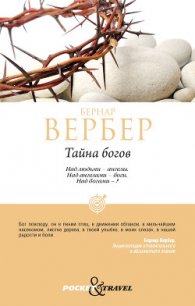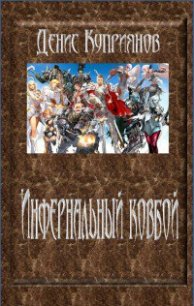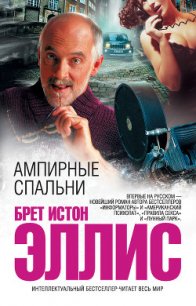Английский язык. Higher education - Филончик Екатерина (книги бесплатно без .TXT) 📗
2. educationalist b. person who teachers in a college or university
3. governess c. person who trains sportsmen and athletes or a student for an exam
4. guru d. female teacher who lives with a family and educates their children at home
5. instructor e. private teacher; directing the studies of undergraduates
6. lecturer f. an expert in educational methods
7. schoolmaster g. female teacher in a school
8. tutor h. one who gives information or knowledge or teaches particular skills
9. trainer i. trusted adviser
10. schoolmistress j. influential or revered teacher
11. mentor k. male teacher in a school
PART II
DIRECTIONS:
Fill in the blanks with the words from Vocabulary Extension.
Mr. Brown is a _________ of history at Oxford University.
That was a terrible meal; I’m going to complain to the ___________.
My husband is a physics ________ at the local school.
He is on board of ___________s.
I decided to include Mathematics into my college ___________.
PART III
DIRECTIONS:
Translate the sentences into Russian. Be ready to give their back translation.
1. Has Microeconomics been introduced into the institute curriculum?
2. I see that «Hamlet» is on this year’s syllabus for the English literature.
3. Where is the first-year timetable?
4. According to the timetable we have no history class on Monday.
5. The teaching staff of the college is/are excellent.
6. The department of physics is in the Faculty of Science.
7. The History Department is/are using this room.
8. He has a BA/BSc. He has an MA in linguistics. He has an MSc in astrophysics.
ACTIVITY B
SCAN THE TEXT 1 HIGHER EDUCATION IN THE USA
DIRECTIONS:
Read the headline of the text. What do you want to find out when you read it? Write some questions.
Read the text quickly and answer the questions you have written.
ACTIVITY C
READING
DIRECTIONS:
Now read.
HIGHER EDUCATION IN THE USA
Out of more than three million students who graduate from high school each year, about one million go on for "higher education". It is not easy to enter a college at a leading university in the United States. Such a college may accept only one out of every ten who apply. At present there are over 3,300 different institutions of higher education in the USA with more than 12 million students.
Successful applicants at colleges of higher education are usually chosen on the basis of (a) their high school records which include their class rank, the list of all the courses taken and all the grades received in high school, test results; (b) recommendations from their high school teachers; (c) the impression they make during interviews at the university, which is in fact a serious examination; and (d) their scores on the Scholastic Aptitude Tests (SATs). The SAT is a test in mathematics and English language which was introduced in 1947. The SAT is taken in the 11th grade 'of high school (over 1,5 million high school students take it yearly). If a student gets 1600 scores it is considered as a good result, if he or she gets 400 scores such a result is considered to be poor. A SAT can be taken two or three times, so that the student can improve the results if he or she wishes to do so.
The system of higher education includes 4 categories of institutions:
(1) the two-year, or community college, which is financed by the local authorities and which is intended to satisfy the needs of the local community in different professions. Tuition fees are low in these colleges, that is why about 40 percent of all American students of higher education study at these colleges. On graduation from such colleges American students can start to work or may transfer to four-year colleges or universities;
(2) the technical training institution, at which high school graduates may take courses ranging from six months to three — four years, and learn different technical skills, which may include design, business, computer programming, accounting, etc.,
(3) the four-year college which is not part of a university. The graduates receive the degree of bachelor of arts (BA) or bachelor of science (BS),
(4) the university, which may contain (a) several colleges for students who want to receive a bachelor's degree after four years of study; and (b) one or more graduate schools for those who want to continue their studies after college for about two years to receive a master's degree (Master of Arts (MA) or of Science (MS) or a doctoral degree (Ph. D.— Doctor of Philosophy, in some science). There are 156 universities in the USA.
Any of these institutions of higher education may be either public or private. The public institutions are financed by the state. Of the four-year institutions 28 percent are public, and 72 percent are private, but most of the students, about 80 percent, study at public institutions of higher education, because tuition fees here are much lower. If at the end of the 1980s tuition fees at private institutions were 12 thousand dollars a year and even higher, at public institutions they were 2–5 thousand dollars a year.
Many students need financial aid to attend college. When a family applies for aid, an analysis is made of the parents' income. The aid may be given in the form of a grant, or stipend which the student doesn't need to pay back. It may be given as a loan, which the student must pay back after college. The third type of aid may be given in the form of some kind of work, which the student has to do at the university or college, for which he gets some money. Most students work, especially during the summer vacation.
The academic year is usually nine months, or two semesters of 4 and a half months each. Studies usually begin in September and end in July. There are summer classes for those who want to improve the grades or take up additional courses. Students who study at a university or four-year college are known as undergraduates. Those who have received a degree after 4 years of studies are known as graduates. They may continue with their studies and research work for another 2 years as graduates in order to get a higher degree. The undergraduate students who study for four years are called as follows: (a) the first-year student is called a freshman; (b) the second-year student is called a sophomore; (c) the student of the third year is known as a junior; and (d) the fourth-year student — a senior.
During one term or semester a student will study four or five different subjects. The students' progress is controlled through oral or written tests, term or course papers and a final examination in each course. Each part of a student's work in a course is given a mark which helps to determine his final grade. A student's record consists of his grade in each course. College grades are usually on a five-point scale: A — is the highest mark and is usually equal to 5 points, В = 4, C = 3,D = 2, E or F means failure. The points make it possible to calculate the GPA (grade point average). Normally, a minimum GPA of 3,5 points is necessary to continue their studies at the college or university and to graduate.
Each college or university has its own curriculum. There are courses that every student has to take in order to receive a degree. These courses or subjects are called major subjects or "majors". At the same time there are subjects, which the student may choose himself for his future life. These courses are called "electives". A student has to earn a certain number of "credits" (about 120) in order to receive a degree at the end of four years of college. Credits are earned by attending lectures or laboratory classes and completing assignments and examinations. One credit usually equals one hour of class per week in a single course during the semester.




